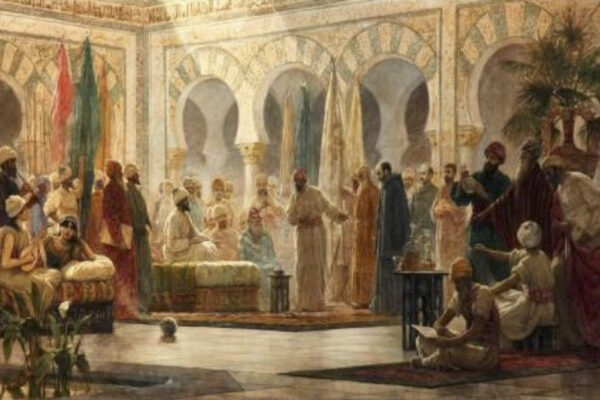To my dad, the day Zahir died, it felt as though a part of that generation died as well. Zahir, to that generation, was an embodiment of the Afghan Pop Star, and a person who was going to usher in a new generation of Afghan talent that crossed regional lines. His death signaled the likely end of that era.
To my dad, the day Zahir died, it felt as though a part of that generation died as well. Zahir, to that generation, was an embodiment of the Afghan Pop Star, and a person who was going to usher in a new generation of Afghan talent that crossed regional lines. His death signaled the likely end of that era.
This article was originally written for Ajam Media Collective by author Weiss Hamid. You can find the original article here.
“I do not think there will ever be another Ahmad Zahir”
Ask most Afghans, like my parents (and a list of extended relatives, family friends, cousin’s cousins, etc.) what they think of Ahmad Zahir, and they will probably tell you that he is the King of Afghan music. They will probably play you a song of his and dissect each lyric. If you looked interested enough for their approval, they might even play you three hours worth of his songs. Some even call Ahmad Zahir the “Afghan Elvis.” After all, they would say he is by far the most influential singer in Afghanistan from the 1960’s onward.
To many Afghans, Ahmad Zahir was more than just a musician. He was a cultural phenomenon during his lifetime and his influence continues to be transmitted to younger generations of Afghans my age. His death was very much linked to Afghan political history, and the collective memory experienced by the first wave of Afghan diaspora who fled the country during the 1979-1986 Soviet invasion.
As a second-generation Afghan-American, I wanted to take the opportunity to retell the Ahmad Zahir story through the eyes of my father, who not only lived in Afghanistan when Zahir rose to prominence — starting from the late 1960s — but was also a classmate of the future king during their formative years a decade earlier.
While I remember falling asleep to Ahmad Zahir music as a child, it never struck me as something I wanted to explore further. As I grow older and reach the age of when my parents left Afghanistan, however, I feel a sense of unresolved fascination with my parents’ generation, memories, and earlier lives. I hoped that this interview with my father could develop a better understanding of his adolescence, and connect me to exactly what my father saw as his “homeland,” unsure what it really meant to him, through his eyes.
Although my father’s recollections of Ahmad Zahir will be used to formulate a more encompassing history, it is only one of the many perspectives that inform a collective memory of Afghanistan. Familial oral histories play an important role in the construction of identity, especially in communities that have been displaced from their former homes. The acts of recollection and transmission are a shared experience across generations and geographic locales, as my father’s memories of Afghanistan have become integral to my own understandings of the past and present.
My interview with him led me to both personalize and deconstruct Ahmad Zahir’s legacy, understanding why and how my father and other Afghans his age hold onto Ahmad Zahir so dearly. Ahmad Zahir’s life – and just as important, his death – continues to play in the hearts of many in the Afghan diaspora.
“He was 14-15 years old when he first sang at our school”
My father and Ahmad Zahir both attended Habibia High School in Kabul in the early 1960s, where they met at student recitals for performances of songs and ghazals. Zahir performed frequently at these events, singing songs with his accordion. He instantly resonated with the students.
“For the younger generation, the pop singers were their ideal singers, and Ahmad Zahir was one of them,” my father tells me. Ahmad Zahir captured the zeitgeist of time for young Afghans who enjoyed popular music. According to my father, “he represented something new, and that made him very popular with the students at school.”
For those students, Ahmad Zahir’s music was unconventional, representing themes of glamour, politics, and love. It was a type of music not often heard by many Afghans at the time, and the novelty made Zahir a very popular student.
My father recalled another experience with Zahir. In their senior year of high school, the students took a bus trip across some of the provinces in Afghanistan. During the trip, the long bus rides were interspersed with Zahir singing songs for his fellow students. Everyone cheered on as Zahir went from song to song, entertaining the people around him.
As my father describes this, he wistfully states, “hearing his songs remind me about all of those trips, those laughs, and our good times in Afghanistan.”
“Being with Ahmad Zahir was like being with a pop star”
After high school, Zahir attended and graduated from Darul Malimeen (“Teachers Training Center”). Zahir’s first love, however, was always music, and he decided to pursue it further. For years he and his high school friends had an amateur band in Habibia High School. Much like the stories of many other pop stars, Zahir went solo. And only then did he make it big.
He was a prolific singer, recording 19 albums during his lifetime, which has ballooned since his death to include hundreds of live-recorded songs. Critics lauded his music because of his singing voice and his incorporation of popular Persian poetry into his lyrics. He sang songs of love, heartbreak, and even politics.
His music also set a marker for a generation of Afghans in the late 1960s, early 1970s. This did not just include people in Kabul, but throughout the country. In Kandahar, a primarily Pashto-speaking province in Afghanistan, high school and college students in the region started listening to Zahir as well, despite the fact that he sang primarily in Dari. Despite the general preference for Pashto-singing performers, the youth gravitated towards Zahir, sharing an intrigue of the novelty that Zahir provided.
His popularity flourished through the 1970s and he was respected in many regions in Afghanistan, a rare feat for any public figure in the country. This changed, however, in 1979.
“Everybody was crying. Everybody was wearing black. It was a national mourning day”
On June 14, 1979, on the day of his 33rd birthday, Ahmad Zahir was found dead in his car. His death, much like his life, has been subject to folklore and legend.
Some attribute it to a car accident. Others, however, have a wide variety of theories ranging from a hired hit from the family of his first wife, an assassination by a communist general, or a mysterious jealous husband. The circumstances of his death continue to be a mystery amongst Afghans today, yet what is undeniable is the reaction to his death from the center of his fan base, Kabul.
“The entire university mourned his death. The students felt like they lost a member of their own family,” my father tells me, with a quiver in his voice. “All the classrooms were empty.”
To my dad, the day Zahir died, it felt as though a part of that generation died as well. Zahir, to that generation, was an embodiment of the Afghan Pop Star, and a person who was going to usher in a new generation of Afghan talent that crossed regional lines. His death signaled the likely end of that era.
It is also important to look at Zahir’s death within the context of the Afghan political narrative. Prior to the 1970s, Afghanistan was a monarchy ruled by King Mohammad Zahir Shah. In 1973, Shah’s prime minister, Mohammad Daoud Khan, seized control and declared himself as President and Prime Minister. In 1978, members of the People’s Democratic Party of Afghanistan (a Socialist party) assassinated Khan, along with his family. This assassination led to further turmoil that culminated in the Soviet invasion of Afghanistan on December 24, 1979. It was from this invasion, as well as the subsequent civil wars throughout the early 1980’s, that the majority of the Afghan diaspora fled from the country.
The context of Ahmad Zahir’s death with respect to the conditions of Afghanistan at the time is critical in understanding my father’s narrative. In 1979, Afghans saw the death of what some have believed to be their beloved national symbol, followed by bloody civil war and foreign invasion.
This brings us to today, and the present opinion of Ahmad Zahir by a certain group Afghans, both members of that diaspora and their children.
“If I listen to one Ahmad Zahir song, it takes me three days to get over my homesickness”
It is undeniable that Ahmad Zahir had enormous skill as a singer. After speaking with my father for this interview, however, I realized that Ahmad Zahir was central in the diasporic imagination. Zahir was not just the zeitgeist of pop culture; he became a symbol of stability and peace for my father. He represented potential and “progress.”
As my father describes, “Zahir’s music reminds me of that type of Afghanistan that we lived at that time.” Over the years of revolution, invasion, war, and forced migration, the Afghan diaspora transformed Zahir the pop singer into a personification of longing.
At one point in the interview, my father lowered his voice and mournfully stated, “I can’t listen to Ahmad Zahir all the time. It reminds me too much of my school years. We had a very good life and now it just makes me sad.”
Ahmad Zahir evokes a quiet nostalgia for my father, not only about Zahir’s music specifically but about a past Afghanistan in general. Zahir will forever be tied to a generation’s memories of their own youth and shared experiences. For those who were uprooted and forced to grow into adults at a much quicker pace, his music serves as a way to relive childhood innocence.
I look at this and compare it to myself. My mother and father had to migrate to several different countries, looking for stability to provide for their future family. At the same age, I am sitting at a local coffee shop, on a laptop they helped purchase for me.
In preparation for this article, I spoke to a cousin of mine who lives in Afghanistan now. His family fled the country during the civil war, and resided in Pakistan as refugees for several years. While in Pakistan, he became fascinated with Ahmad Zahir, and explored his music and influence in Afghanistan. In that pursuit, he came across one of Zahir’s well-known photographers selling negatives of Zahir’s pictures — essentially like trading cards. My cousin bought them all, and gave Ajam Media Collective the pleasure of sharing these photographs. Many of these photographs are never-before-seen, and Ajam has the benefit of publishing those photographs for the first time.
As a child raised by parents of the diaspora, Ahmad Zahir’s music will always present a struggle for me. A struggle to connect myself to a sense of an Afghanistan that my parents feel, to which I still remain disconnected. Listening to his music, I obviously do not feel the quiet nostalgia that they feel. To me, Ahmad Zahir represents a way to understand the thoughts and feelings of a people whose innocence and idealism were taken away so abruptly.
He also serves as a way for me to connect with my family, since many of these stories were new revelations for me. I was unexpectedly connected to the shared experience of people spanning decades, generations, and great distances. The figure of Ahmad Zahir is situated at the intersection of biographical, familial, and national histories.





